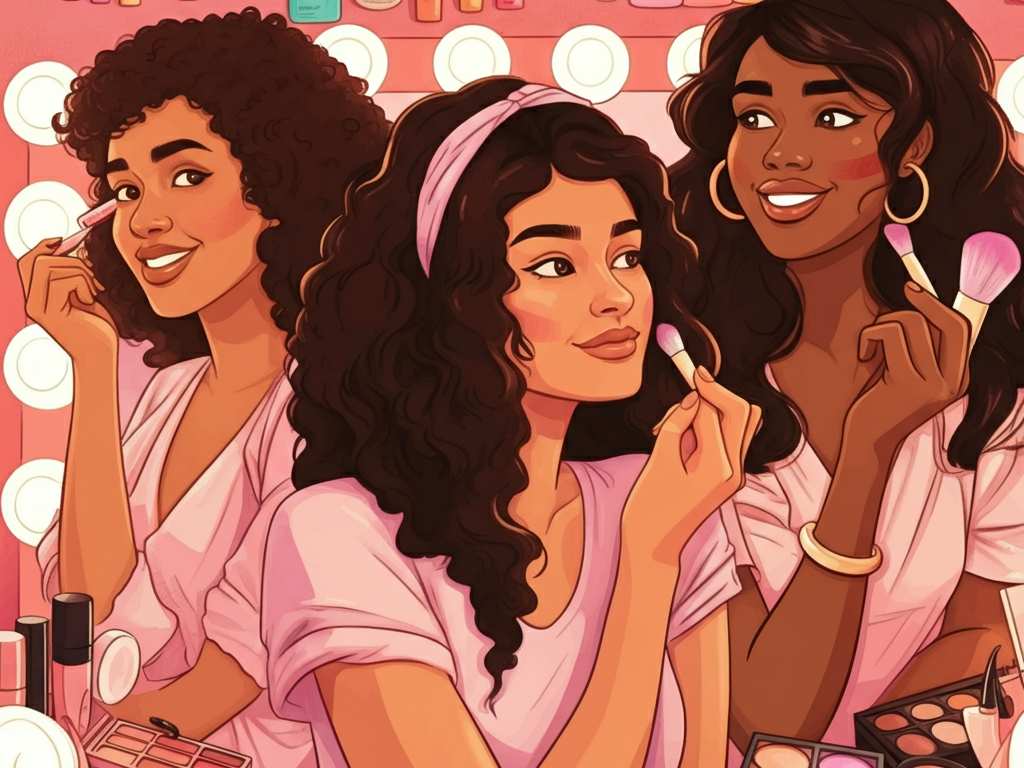The Importance of Inclusive Makeup
The beauty industry has come a long way in the quest for inclusive makeup. No longer are makeup counters filled with only a handful of shades for “light,” “medium,” or “dark” skin tones. Today, brands are stepping up to create diverse products that cater to every complexion, celebrating individuality and ensuring that everyone can enjoy the magic of makeup.
Finding the right shades for your skin tone is not just about aesthetics—it’s about feeling seen, included, and confident in your look. From foundation to blush, inclusive makeup ensures that people of all skin tones can express themselves without compromise. But how do you identify the perfect products for your unique complexion? Let’s walk through the essentials.
Understanding Your Skin Tone
Before you build your makeup collection, it’s vital to understand your skin tone and undertone.
What is Skin Tone?
Your skin tone refers to the depth of color on the surface of your skin. It’s generally grouped into three categories:
- Light
- Medium
- Dark
Within these categories, there are endless variations depending on genetic background and environmental factors.
What are Undertones?
Undertones are the subtle hues beneath the surface of your skin that affect your overall complexion. There are three primary undertones:
- Warm undertones: Yellow, golden, or peachy hues.
- Cool undertones: Pink, red, or blue hues.
- Neutral undertones: A balance of both warm and cool tones.
How to Identify Your Undertone
Here are some quick tricks to help you decode your undertone:
- Look at your veins. If they appear blue, you’re likely cool-toned. If they look green, you’re warm-toned. A mix? You’re neutral.
- Jewelry test. Gold jewelry tends to complement warm undertones, while silver flatters cool tones. If both work for you, you might be neutral.
- The white test. Hold a white piece of fabric next to your skin. If your skin looks rosy, you’re cool-toned. If it looks yellow, you’re warm-toned.
Taking the time to understand your skin tone and undertone is the first step toward finding products that enhance your natural beauty.
Choosing the Right Foundation
Foundation is the base of any makeup routine, and choosing the right shade can make or break your look. Here’s how to get it right.
Finding Your Perfect Match
- Swatch in natural light. Apply three shades closest to your skin tone along your jawline. The one that disappears seamlessly into your skin is your match.
- Don’t forget your undertone. Many brands now categorize their shades by undertone, so look out for labels like “warm,” “cool,” or “neutral.”
- Test before you commit. Foundation can oxidize (darken) over time. Wear it for a few hours to ensure it stays true to your color.
Brands with Diverse Shade Ranges
Thankfully, many brands have embraced diversity in their foundation lines. Here are a few leading the way:
- Fenty Beauty by Rihanna shattered the industry norm with its initial launch of 40 inclusive shades (now expanded further!).
- MAC Cosmetics offers a wide range of shades and undertones across its iconic Studio Fix line.
- L’Oréal True Match has accessible, affordable options with an impressive spread of shades to match all complexions.
These brands prove that the era of a one-size-fits-all foundation is over.
Enhancing Features with Color
A well-chosen color can transform your look. But how do you pick the perfect hues for your skin tone?
Eyeshadow
- Light skin tones shine in champagne, soft pinks, or warm brown tones.
- Medium skin tones can explore rich golds, oranges, and mauves.
- Dark skin tones look stunning with jewel tones like emerald, sapphire, and deep plum.
Blush
- Light skin tones benefit from soft pinks or peaches.
- Medium skin tones glow with coral, tangerine, or dusty rose.
- Dark skin tones pop with bold orange, fuchsia, or cranberry shades.
Lipstick
- Light skin tones look lovely in nude pinks, cherry reds, and mauve.
- Medium skin tones rock brick reds, warm terracotta, and berry hues.
- Dark skin tones can carry bold plums, chocolates, and deep wines effortlessly.
The key is to experiment and have fun. Makeup is all about self-expression.
The Impact of Inclusive Makeup
Inclusive makeup isn’t just a trend—it’s a movement. Representation in beauty allows everyone to feel seen and celebrated.
Industry Success Stories
- Fenty Beauty raised the bar by proving that inclusivity can be both ethical and immensely profitable. Following its success, many brands stepped up their game.
- Pat McGrath Labs unapologetically celebrates bold, diverse shades across every product line.
These brands are reshaping the narrative, encouraging everyone to celebrate their beauty without compromise.
Why Inclusion Matters
When brands cater to diverse skin tones, they send a powerful message of representation. It’s not just about makeup—it’s about enhancing the confidence and voice of individuals from all backgrounds.
Makeup Trends for All Skin Tones
2024 promises exciting makeup trends that cater to all skin tones. Here’s what to look out for—and how to adapt them to your complexion.
Trends to Watch
- Glazed skin. Aim for dewy, luminous skin with lightweight highlighters.
- Berry’s lips. Any complexion can rock a bold, berry-pink lip.
- Bronzed monotones. Use the same bronze shade on your eyes, cheeks, and lips for a cohesive, sun-kissed look.
Adapting the Trends
The secret to wearing any trend? Stay true to your undertone. For example, if you’re cool-toned, opt for silver-based highlighters or blue-based berry shades. Warm-toned? Go for gold or peach nuances.
Celebrating Diversity in Beauty
Makeup has always been about more than just looking good—it’s about self-expression, creativity, and confidence. By choosing products that celebrate your unique skin tone, you’re making a statement about beauty that includes everyone.
Remember, beauty has no rules—just possibilities. Experiment. Explore. Most importantly, enjoy the process!
Have your own makeup tips or stories you’d like to share? Drop them in the comments or tag us in your makeup looks on social media using #DiverseBeauty.
